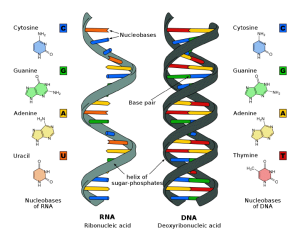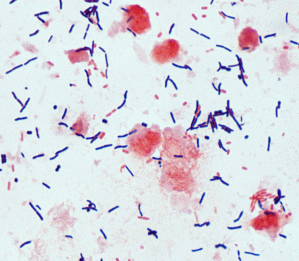
Bacteria on the surface of an electrode
Scientists have taught bacteria to feed on electricity. Because the bacteria feed on iron, they were well suited for this kind of study. From Popular Science:
Researchers at the University of Minnesota, St. Paul, have coaxed a species of bacteria into trading their usual diet of partially-oxidized iron for a small current of electricity–a trick that may eventually make the microorganisms useful producers of biofuels.
The bacterium involved in the study was Mariprofundus ferrooxydans, a species that makes its home around hydrothermal vents on the seafloor. Like other iron-oxidizing bacteria, M. ferrooxydans relies on a form of soluble iron, called ferrous iron, or Fe(II), as a source of the electrons it needs to breathe. When plenty of oxygen is present, ferrous iron readily gives up its extra electron to the oxygen, to become the more stable Fe(III), or ferric iron–the kind of iron oxide we know of as rust. But in lower-oxygen environments, M. ferrooxydans’ can do oxygen’s job for it, thereby gaining energy from the extra electron.
In their experiment, the researchers deposited some M. ferrooxydans onto the surface of an electrode, which was tuned to release electrons at the same energy level that Fe(II) would provide. To get the organisms started in their new habitat, the scientists also added some of the bacterium’s natural food–Fe(II)–to the mix.
After letting the microbes multiply over the surface of the electrode for four weeks, they scraped some away and started a new colony on an electrode with no Fe(II) around. Amazingly, the bacteria continued to thrive, even after some were transplanted onward to a third electrode. Some nutrients were still provided to this colony, the study noted, but in amounts much too small to support the bacterium’s apparent growth.







